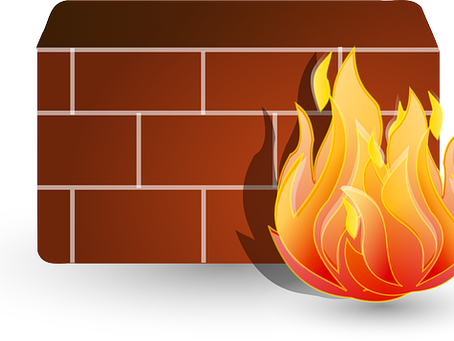Exploring the Crucial Differences Between Antivirus and Firewall
Share

Exploring the Crucial Differences Between Antivirus and Firewall
Image Courtesy: pixabay.com
Background
In today’s interconnected world, where digital threats exist at every corner of the internet, protecting your computer and data has never been more critical. Two essential tools in the cybersecurity arsenal are antivirus software and firewalls. While both serve the main goal of protecting your digital life, they do so in vastly different ways. In this blog, we will examine the differences between antivirus and firewall software, clarifying their roles, functionalities, and why you need both to create a robust defense against cyber threats.
The Role of Antivirus Software
Imagine your computer as a bustling city, and the data on it as the citizens. Just as a city relies on healthcare professionals to diagnose and treat illnesses, your computer depends on antivirus software to identify and eliminate malicious software, commonly known as malware. Antivirus software meticulously examines every file and program that enters your system.Malware Detection:
The primary function of antivirus software is to detect and remove malware, which includes viruses, worms, Trojans, spyware, adware, and more. It does this by scanning files and programs for known patterns or signatures of malicious code.
Real-time Protection:
Many modern antivirus solutions offer real-time protection, actively monitoring your computer’s activities and incoming data to spot and neutralize threats the moment they appear.
Regular Updates:
Antivirus software relies on regularly updated databases of malware signatures to stay effective. Without these updates, it cannot recognize new or evolving threats.
Quarantine and Remediation:
When malware is detected, antivirus software typically quarantines the infected files, rendering them harmless. Some solutions also offer remediation features to repair the damage caused by malware.
Scanning Options:
Users can perform various types of scans, such as quick scans, full system scans, or custom scans, depending on their preferences and needs.
Email and Web Protection:
Many antivirus programs extend their protection to email attachments and web content, scanning for malicious links and files to prevent users from accidentally downloading harmful content.
The Role of Firewall
A firewall controls who enters and leaves your digital premises. Firewalls are essential for network security, as they act as a barrier between your computer and potential threats from the internet or local networks.
Traffic Control:
A firewall monitors incoming and outgoing network traffic, allowing or blocking data packets based on a set of predefined rules. It filters data based on port numbers, IP addresses, and other criteria to determine whether it should be allowed or denied.
Packet Inspection:
Deep packet inspection is a crucial feature of firewalls. It examines the content of data packets to identify suspicious or malicious activity, even if it doesn’t match known signatures.
Application Filtering:
Some firewalls can identify specific applications and control their access to the internet. This helps in preventing unauthorized data leaks and can be useful for managing network bandwidth.
Intrusion Detection and Prevention:
Advanced firewalls can detect and block intrusion attempts by identifying patterns of suspicious behavior on your network.
Stateful Inspection:
Modern firewalls use stateful inspection to keep track of the state of active connections, allowing them to make more informed decisions about the traffic they permit or block.
Network Segmentation:
Firewalls are also instrumental in dividing networks into segments, enhancing security by isolating different parts of a network from one another. This is especially crucial for large organizations.
Key Differences
Now that we’ve explored the core functions of antivirus and firewall software, let’s examine their differences:
Focus and Functionality:
– Antivirus primarily focuses on identifying and eliminating malicious software residing on your computer or in files and attachments. It acts reactively, responding to threats after they have entered your system.
– Firewall, on the other hand, focuses on controlling network traffic and ensuring that only authorized data enters or leaves your computer or network. It operates proactively, preventing unauthorized access in real-time.
Detection Methods:
– Antivirus relies on signature-based detection, which means it identifies known patterns of malicious code. It may struggle to detect entirely new or zero-day threats.
– Firewall uses rule-based detection, examining data packets and traffic patterns. This allows it to identify suspicious activity even if it doesn’t match known threat signatures.
Protection Scope:
– Antivirus protects the integrity of your computer and data by identifying and removing malware.
– Firewall protects your network and the devices connected to it by controlling data traffic.
Time of Action:
– Antivirus acts after malware has entered your system, typically during scans or when a suspicious file is accessed.
– Firewall acts in real-time, immediately deciding whether incoming or outgoing data should be allowed or blocked.
Updates:
– Antivirus requires regular updates to its signature database to remain effective against new threats.
– Firewall relies less on frequent updates and more on maintaining its rule set and configuration.
Use Cases:
– Antivirus is essential for protecting individual devices, especially those used for tasks like downloading files, browsing the web, and handling email.
– Firewall is crucial for securing networks, including home networks and organizational networks, by controlling traffic flow and preventing unauthorized access.
Why You Need Both
It’s clear that antivirus and firewall software serve distinct but complementary roles in your cybersecurity strategy. While antivirus protects your computer from internal threats (malware), a firewall shields your network from external threats and unauthorized access. Here’s why you need both:
Comprehensive Protection:
Combining antivirus and firewall software creates a multi-layered defense against cyber threats. This redundancy increases the chances of detecting and blocking malicious activity.
Defense in Depth:
The concept of defense in depth is fundamental in cybersecurity. By having both antivirus and firewall protection, you create multiple barriers that malicious actors must breach to compromise your system or network.
Protection Against Different Threats:
Antivirus primarily guards against malware, while firewalls protect against network-based threats. Cyberattacks often use a combination of tactics, so having both tools broadens your protection.
Network Security:
A firewall is essential for safeguarding your entire network, making it indispensable for home networks with multiple devices and critical for businesses with complex network infrastructures.
Real-time and Post-Infection Protection:
Antivirus software can clean up infections, but a firewall can prevent them from happening in the first place. The combination ensures a proactive and reactive approach to security.
Customization:
Both antivirus and firewall software allow for customization of rules and settings, enabling you to tailor your security to your specific needs and preferences.
Final Note
In the domain of cybersecurity, antivirus and firewall software play indispensable roles, each with its own distinct function and purpose. While antivirus detects and eliminates internal threats, the firewall regulates who can enter and leave your network. Understanding the differences between these two tools and their complementary nature is crucial for building a robust defense against the ever-evolving landscape of cyber threats. To ensure the safety of your digital assets, it’s not a question of antivirus vs. firewall but a recognition of their synergy and the need for both in your cybersecurity arsenal.


